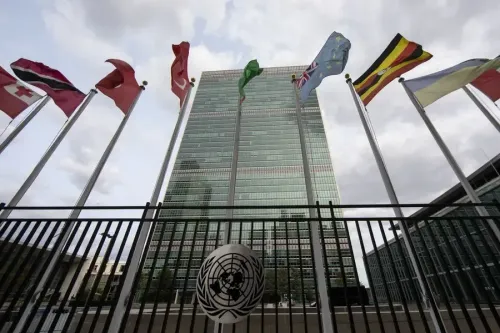Could Lithuania’s Tax Breaks Help Boost the Fertility Rate?

Synopsis
Key Takeaways
- Lithuanian President proposes a plan to address declining birth rates.
- Target birth rate set at 1.5 children per woman.
- Families with multiple children to benefit from tax breaks.
- Additional support measures include housing options and tuition reimbursements.
- Demographic challenges require immediate attention from policymakers.
Vilnius, Nov 25 (NationPress) Lithuanian President Gitanas Nauseda has unveiled a comprehensive proposal involving tax breaks and social initiatives aimed at increasing the nation's birth rate to 1.5 children per woman, as reported by Lithuanian National Radio and Television (LRT).
Vaidas Augustinavicius, Nauseda's Chief Advisor on economic and social policy, acknowledges that this target is ambitious yet essential in light of the significant demographic decline.
"The President stresses that it is crucial to mitigate the drop in the birth rate, or at least halt it, given the substantial decrease we've witnessed over recent years. Ideally, we aim to see an increase," Augustinavicius stated, according to Xinhua News Agency.
In discussions with sociologists, it was noted that if the fertility rate could rise from 1.1-1.2 to 1.5, it might serve as a viable target. Clearly, such changes are challenging to achieve.
As part of the President's strategy, families welcoming two or more children would enjoy zero income tax for five years following the birth of each additional child. Furthermore, Nauseda proposes offering income tax incentives to employers who hire parents from larger families.
Other potential measures include creating a social insurance foundation for young families to support pregnancy and maternity leave, considering reimbursement for part of tuition fees after childbirth, and expanding municipal housing programs to facilitate rent-to-buy options for families with children in regional areas.
Augustinavicius noted that recent trends indicate that while young people in Lithuania are not entirely dismissing the idea of parenthood, they are postponing their family plans. "The president recognizes that the birth rate has been on a downward trend for several years, particularly experiencing a sharp decline after 2022.
The International Monetary Fund reported in October that Lithuania is under increasing demographic pressure due to low birth rates and prolonged negative migration. From 1998 to 2019, the working-age population decreased from 2.34 million to 1.81 million, although it is projected to rise to 1.89 million by 2024.
The European Union's total fertility rate dropped to 1.38 in 2023, down from 1.46 the previous year and significantly below the replacement level of 2.1. Malta recorded the lowest rate in the bloc at 1.06, followed by Spain at 1.12, while Lithuania's rate stands at 1.18.









